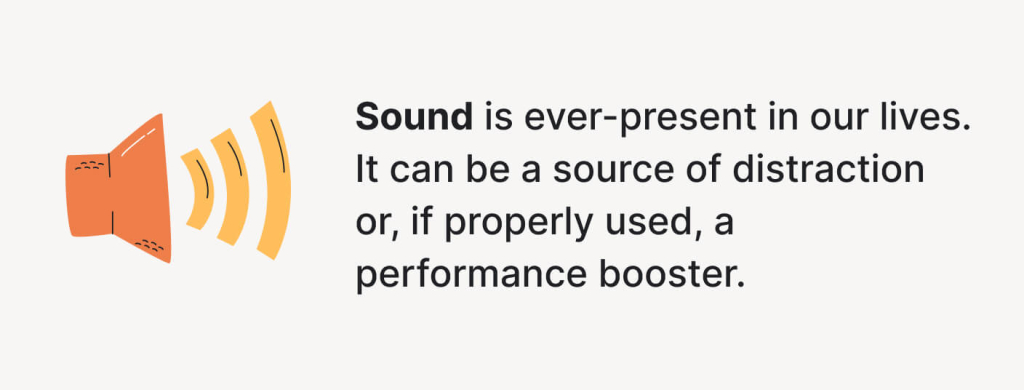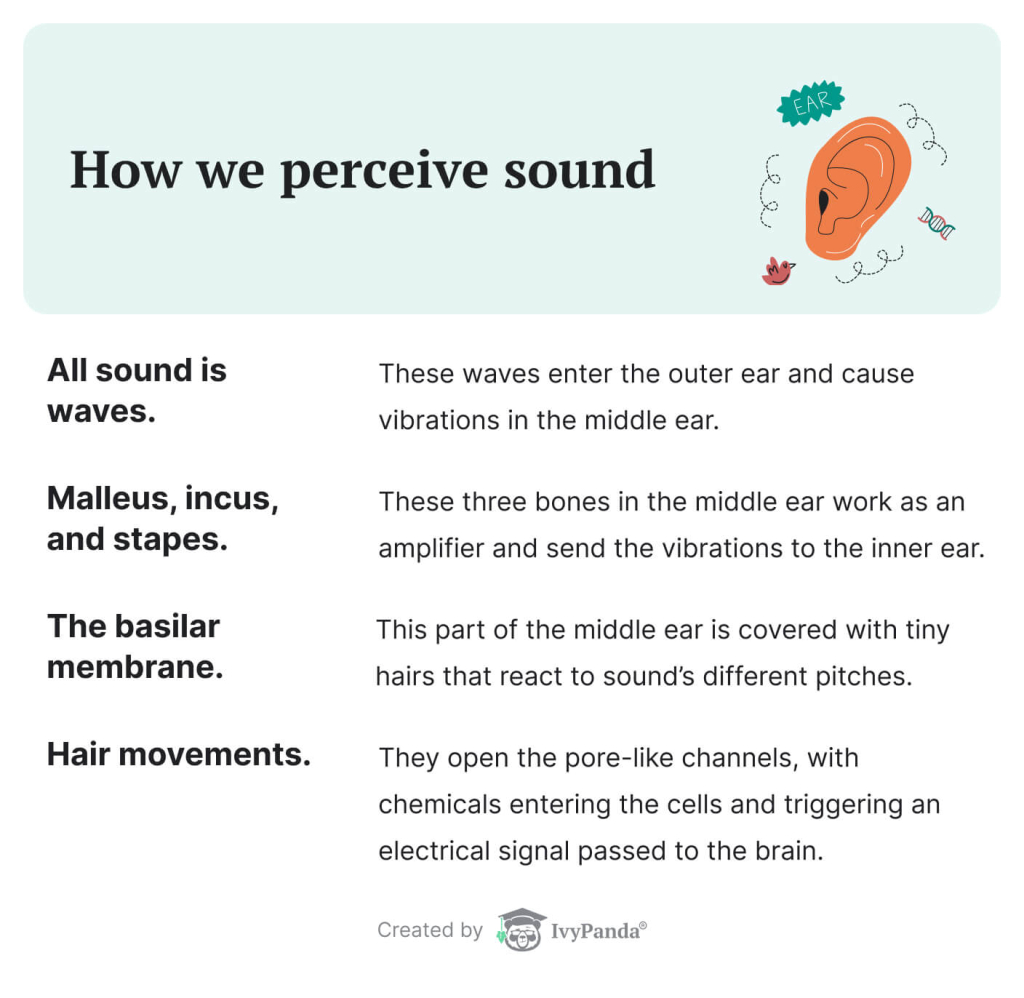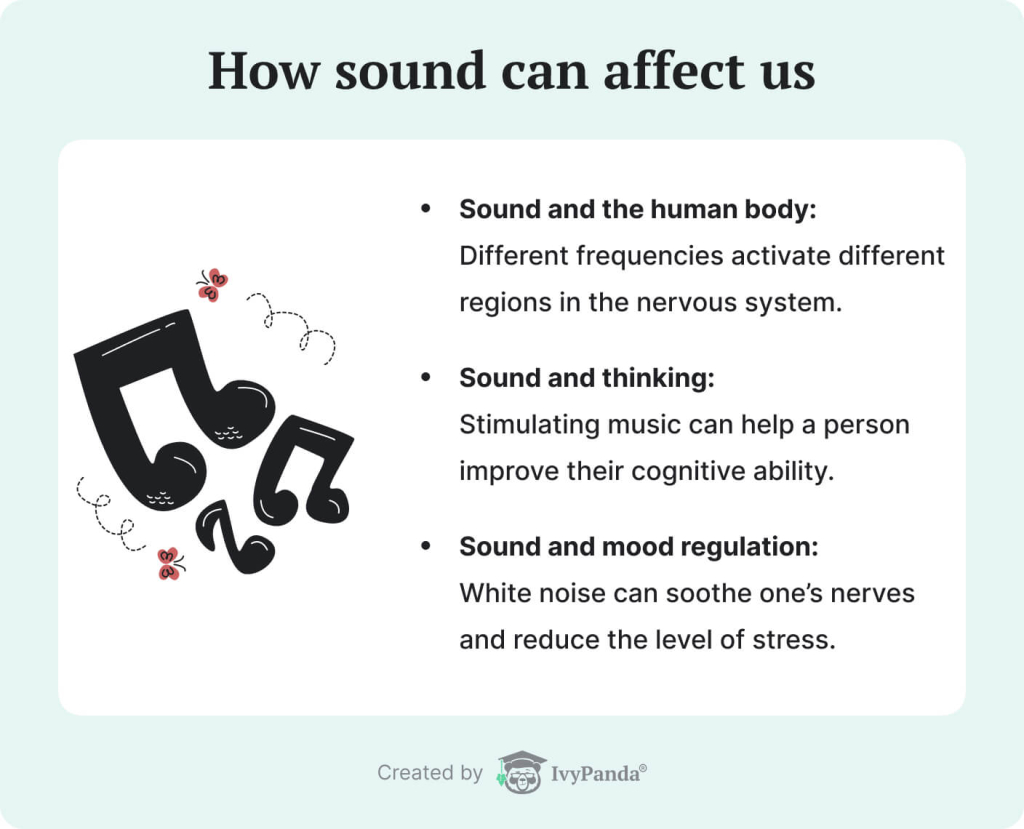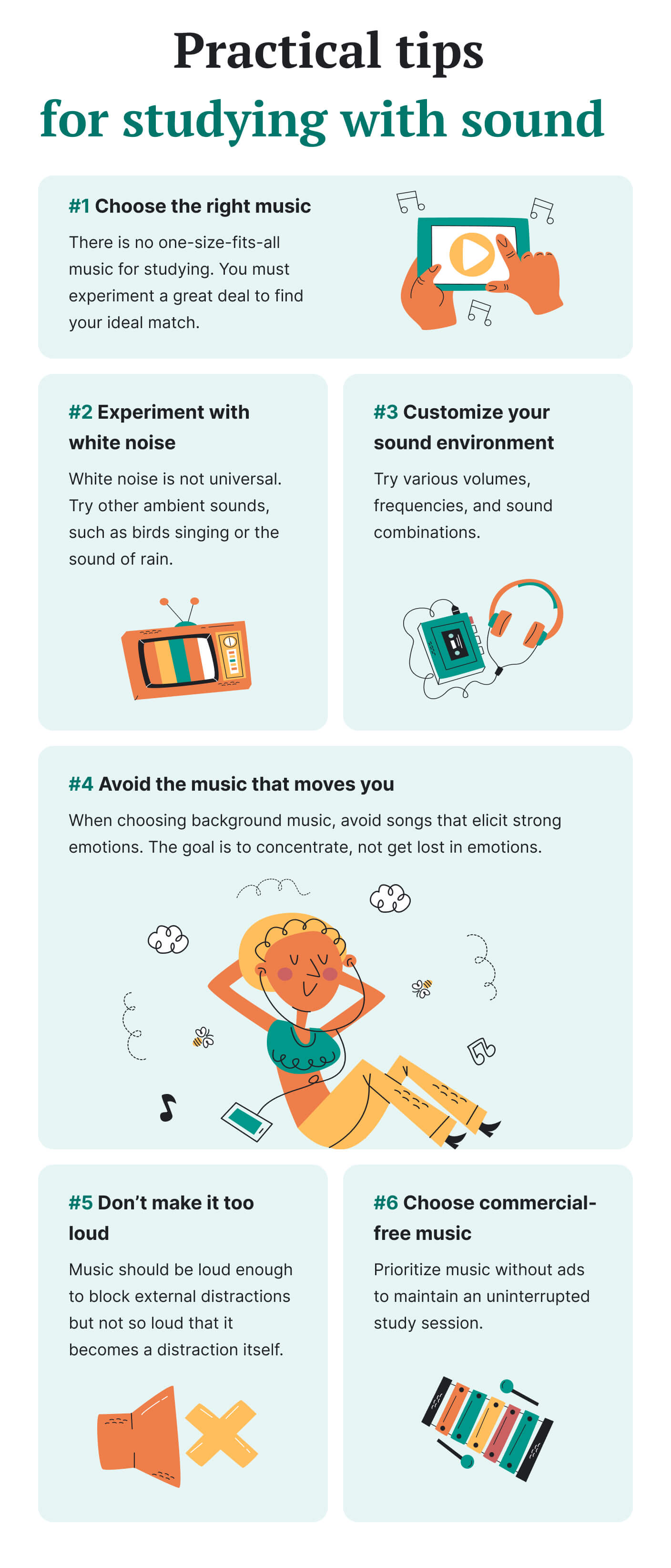In modern society, people live, interact, and study amid a cacophony of background noises. From the neighbor’s TV to the relentless roar of street traffic, concentrating on tasks can be challenging with such auditory distractions.
Consider a different scenario:
You sit down to write an essay, distracted by thoughts and external stimuli, and then you play a Mozart symphony and complete the dreaded task in an hour.
As you can see, sound permeates our lives. It’s one of our five senses through which we continuously perceive the world and its dynamics. It can either be a source of distraction or, if properly used, a catalyst for improved performance.

Continue reading to explore how to harness sound to your advantage and transform it into a secret weapon for your productivity.
🙉 How We Perceive Sound
Let’s start with the basics of how our body perceives sound. We’ll keep it simple:

- Sound manifests as waves. These waves enter the outer ear, causing vibrations in the intricate anatomical structure of the inner ear: the malleus, incus, and stapes.
- These three bones amplify the received vibrations, sending them to the cochlea in the inner ear. The cochlea resembles a snail filled with fluid, divided into upper and lower parts by the basilar membrane.
- The basilar membrane is lined with tiny hairs. Hairs located in different regions of the membrane respond to sounds of varying pitches. High-pitched sounds activate the hairs at the larger end of the membrane, while lower-pitched sounds activate those at the center.
- Movements of the hairs stimulate the overlying structure of the cochlea and open the pore-like channels. Chemicals enter the cells, triggering an electrical signal relayed to the brain.
🔊 How Sound Can Affect Us
As we’ve already noted, sounds of various frequencies stimulate various regions of hairs on the basilar membrane, implying that they produce distinct signals and impact the brain differently. Here’s what we know about these effects.

Sound and the Human Body
Sounds of different frequencies activate distinct responses in the parasympathetic nervous system.
Low Frequencies
Low frequencies generally induce a sense of calmness and relaxation in the human brain. Deep basses can even reduce blood pressure and alleviate muscle tension, facilitating a state of tranquility and ease.
High Frequencies
Exposure to high frequencies, such as a piercing noise or an infant’s cry, triggers irritation in the human nervous system and prompts heightened alertness. These sounds increase blood pressure by constricting blood vessels, which leads to the release of cortisol. This signals readiness for potential danger.
Health Effects of Sound
While many people harness noise to their benefit, such as calming down before sleep or entering a state of alertness in the morning, prolonged exposure to loud noises can have adverse health effects over time. This is particularly notable for the residents of large cities, where the incessant background noise, termed noise pollution, disrupts sleep patterns and causes chronic stress in the human body and brain.
Sound and Thinking
Sound profoundly affects the human brain; MRI studies reveal that listening to music activates brain regions responsible for memory, attention, emotions, and language production. Hence, it stands to reason that regular exposure to stimulating melodies and rhythms can help enhance cognitive ability.
Sound and Mood Regulation
While most researchers concentrate on sound’s impact on mood, there are additional applications, such as using background noise to calm individuals. While the effects of white noise on infants are well-documented, lesser known is its ability, along with other variations like brown noise, to soothe adult’s nerves and reduce stress levels.
🎶 Colors of Noise
Throughout our lives, we encounter various types of background noises. They can:
- distract,
- improve sleep,
- soothe our nerves,
- or boost concentration.
One such noise is white noise – a blend of sounds across all frequencies, akin to the hum of a fan or a vacuum cleaner. Other types of noise, like brown and pink, are also gaining popularity today. Let’s see how each of them can help your studies.
🤍 White Noise
Named for its similarity to white light, which encompasses all wavelengths, white noise combines all frequencies. It’s believed to mimic the auditory environment of a mother’s womb, offering a calming effect that lulls the human brain and helps people fall asleep more easily and quickly.
🤎 Brown Noise
Containing a higher proportion of lower frequencies, brown noise produces a deeper, more rumbling sound. Though less uniform than white noise and more pronounced bass notes, it mimics the soothing tones of wind or heavy rain, fostering a sense of relaxation. Experimentation with brown noise is increasing, with many individuals reporting better sleep quality and stress reduction.
💗 Pink Noise
If you want to go one step further, consider mixing white and brown noise to create pink noise. Gentler than brown noise, it resembles the tranquil sounds of light rain or a waterfall. Pink noise offers another innovative means of dampening external distractions and promoting a calm mental state, aiding in falling asleep and sleeping longer.
🎧 Practical Tips for Studying with Sound
Research suggests that music can have dual effects on the learning process. While it can enhance concentration for some, it may also be a distraction. What determines this, and how can you harness music’s potential for your study sessions?

#1 Choose the Right Music
There is no one-size-fits-all solution when it comes to selecting music for studying. It is highly individual, and you must experiment a great deal to find your ideal match. Some people study better to calm, melodic pieces (e.g., classics of Mozart or Chopin), while others concentrate with the steady rhythm of modern beats.
#2 Experiment with White Noise
White noise is not ideal for everyone; some learners may benefit from it as a means to mask external distractions. Known for its ability to boost concentration, white noise can significantly aid your study process. Another option is to experiment with ambient noises, like the sounds of a busy street, birds singing in a forest, or the sound of the rain.
#3 Customize Your Sound Environment
Understanding your reactions to sound is critical to optimizing your study process. Experiment with various volumes, frequencies, and sound combinations to see how they impact your cognitive performance. Once you capture these nuances, you can create custom sound environments to maximize your productivity.
#4 Avoid Music that Evokes Strong Emotions
While it may not seem obvious, this tip can significantly enhance your study productivity. When choosing background music, steer clear of songs that elicit strong positive or negative emotions. The goal is to concentrate on your studies rather than getting lost in your emotions or thoughts. Choose emotionally neutral music to support your concentration.
The same applies to songs with lyrics; once you start listening to the words and thinking about the artist’s intentions, your studies stop right there. Instead of aiding your productivity, this becomes a distraction that needs to be eliminated.
#5 Don’t Make It Too Loud
Remember that music can facilitate your studies only if it doesn’t distract you from the primary task. To fulfill its supportive role, it should remain in the background rather than dominating your focus. It should be loud enough to block external distractions but not so loud that it is a distraction itself.
#6 Choose Commercial-Free Music
Commercials can be highly disruptive, especially during intense intellectual activities like studying. Aside from their intrusive nature, they also disrupt your concentration. To prevent this, prioritize music without advertisements to maintain an uninterrupted study session.
These are the critical tips for using music as a study aid. Sound produces profound impacts on the human brain, mood, and concentration, so why not use them to your advantage during intense study sessions?
Apply the strategies outlined here to discover the ideal choices to boost your focus and raise your academic performance to new heights. Feel free to share this resource with your peers if they also need extra help concentrating on their studies.



